Strategic defeat of the German army near Verdun
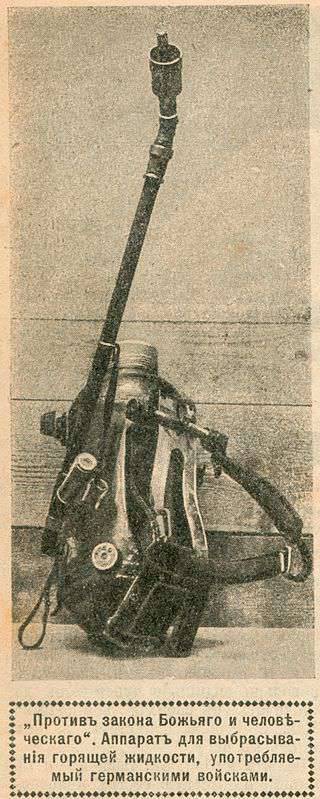 Fighting on the right flank
Fighting on the right flankThe German command did not pay enough attention to the flanks, which led to a number of negative consequences for the attacking troops. On the left bank of the Meuse River, the French launched large-caliber artillery and began firing at the German breakthrough area from the flank and rear. The narrowness of the front of the offensive of the German troops did not allow to escape the disastrous fire of the French artillery and continue the offensive.
To continue the operation, it was necessary to attack now the left bank of the Meuse. And this led to large-scale losses, since the suddenness factor had already disappeared, and positions on the left bank of the Meuse were jam-packed with French troops and numerous artillery. The French army in the Verdun area was already numerically stronger than the German one.
Having launched a new offensive on 6 in March of 1916, the Germans first of all sought to master the most important heights - Mort and 304. However, the new attack did not bring quick success and led to a new “meat grinder”. Germans attracted large forces of artillery and stubbornly attacked. So, the height attack 304 supported about 100 heavy batteries. German infantry methodically, meter by meter, gnawed at enemy positions. But the French had enough manpower and artillery and steadfastly fought off. Therefore, the battles were distinguished by great bloodshed and fatigue.
In addition, the Russians, unexpectedly for Berlin, launched an offensive. The operation of the Western and Northern fronts was organized very quickly, not all the forces managed to concentrate. However, 18 March was hit by artillery and our soldiers went on the attack. The Russian troops at Naroch and near Jacobstadt advanced by 2-3 km, captured the first enemy position. The German command was stunned. The Germans were confident that the Russians were no longer capable of a serious offensive. I had to shoot and direct the divisions to Naroch from the Austrian sector of the front. We stopped attacks near Verdun, thought that the troops from the French front would have to be sent to the East. For a number of reasons, the Russian offensive did not lead to success. But the French helped. The battle of Verdun stopped for a whole week. Only 1 April, German troops continued their attacks. And during this time, the French strengthened their defenses, brought up corps from Lorraine. The French again installed guns on the previously disarmed forts and fortifications.
As a result, the auxiliary operation, which at the end of February 1916 would take no more than a few days, now had to spend 5 weeks (from March 6 to April 9). For nearly a month and a half, German troops fought fiercely for insignificant 6 km to the depth of the front along the Avokur line - altitude Mortom - Cumieres. At the same time, German troops managed to capture the heights of Mort and 304 only in May. The French at this time entrenched at the new frontier.
Thus, at the cost of tremendous efforts, concentration of troops and artillery, a lot of blood, as well as a waste of time, the German army expanded its breakthrough front. However, the German corps could not continue to attack. The soldiers were extremely tired, the parts were drained of blood, it was necessary to regroup and replenish their forces.
Meanwhile, part of the German generals opposed the continuation of the Verdun operation. The warlords, who believed that Germany should continue the offensive in the East, were especially displeased with the success of the 1915 campaign of the year. The chief of staff of the German Eastern Front, General Erich von Ludendorff, wrote 1916 in the middle of May to General Max Hoffmann: “I’m sorry for German families to which the sons were killed by Verdun in an innumerable stream. All these tens of thousands of young destinies could be preserved in the battles in the east and, moreover, achieve significantly better results. ”
Against the useless bloodshed at Verdun, Crown Prince Frederick William, heir to the throne, also spoke out. He was the commander of the army group "Kronprinz Wilhelm", located in the heart of the German front in the West. The heir to the throne was not a “peacetime” general, he was a highly professional, intelligent and strong-willed commander, a typical representative of the Prussian military elite. The courage and tragedy of the German troops at Verdun saw the Hohenzollern heir with his own eyes and experienced very keenly, so his opinion was unequivocal: the effect of suddenness has long been lost, the French will not retreat and will continue to fight to the death on both banks of the Meuse, the German losses became transcendent, and therefore Verdun operation must be terminated.
“The months of the battle of Verdun,” Crown Prince William wrote in his memoirs, “are in my memory the most difficult of the entire war. I anticipated and knew the situation beforehand; I had too many personal meetings with officers and soldiers of combat units to indulge myself with illusions. In the depths of my soul, I was absolutely against the continuation of the offensive, and yet I was forced to execute the order of the offensive. ” The heir to the throne has repeatedly opposed the continuation of the operation, reporting on this both to the Chief of the German General Staff and to his father, Kaiser Wilhelm II.
However, in this confrontation the German generals gained the opinion of the Chief of the General Staff, Falkenhain. He managed to convince Berlin to continue the pressure on Verdun so that if not to avoid the summer offensive of the Anglo-French troops in the Somme region, then weaken it. The German General Staff had information about the preparation of a large-scale Allied offensive on the Somme in the summer of 1916. Falkenhayn believed that the Verdunsky offensive made sense to continue in order to weaken the blow of the enemy on the Somme. Therefore, the German Kaiser Wilhelm II was forced to sign an order of attack. The new directive of the General Staff ordered to capture Verdun before 15 June 1916 of the year.
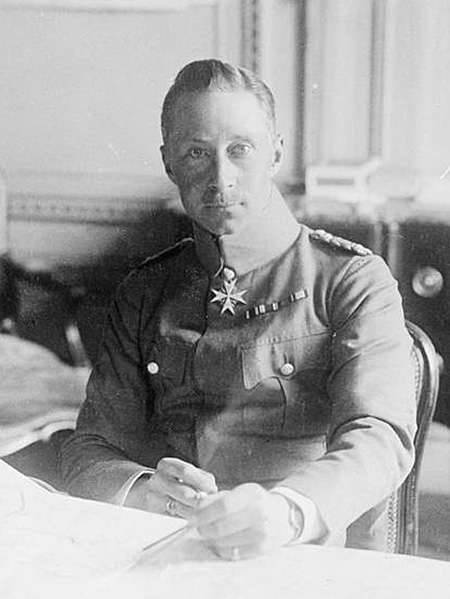
Kronprinz Wilhelm
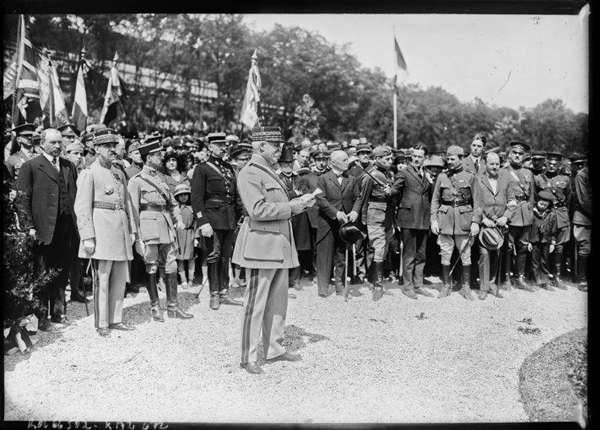
Marshal Henri Petain
Battle of Fort In
On the right bank of the Meuse in March – May 1916, there was a fierce struggle in the area of Fort Vaud (south of Duomon), which became the center of French resistance. Only after a three-month struggle, Fort Worth ceased resistance. 2 June 1916, the German troops under the command of General Edvald von Lohova, with three army corps, launched a decisive offensive. The offensive was supported by a powerful artillery position composed of 26 heavy mortars and 24 large-caliber howitzers. Before the infantry attack, the German artillery conducted training for two days. Only in the last five days during the shelling of the fort, German artillery fired 150 thousands of shells per day.
The German 10-th Reserve Corps managed to completely cut the fort of Vaux from the rear. However, the French garrison did not capitulate. The commander of the fort, Major Renal, categorically rejected the proposal of General von Lohova to lay down weapon and pass the position. Furious melee inflamed on the fortified fortifications of the fort. The Germans used literally everything they had against the French fort: heavy artillery, chemical shells, flamethrowers. However, the French kept and with the help of pigeons kept in touch with the headquarters of Petain.
In the meantime, French troops made continuous counterattacks, trying to drop the enemy. So, May 22, backed by heavy battery 51 fire, they beat off Fort Duomon. However, they could not hold him, as they suffered great losses during the attack on the fort. 24 May German troops captured him again. The French tried to unlock and In. On the night of June 6, the last attempt was made to break the ring of the German blockade by the forces of Colonel Savi’s brigade. The French courageously rushed to the fort, but did not succeed. The brigade fell almost completely — the German field guns shot the French assault lines with direct fire.
7 June, the last carrier pigeon from Fort Waugh arrived with a note written in blood. There were only a few words in it: “Long live France!” A pitiful handful of wounded defenders of the fort was captured. German casualties - 2700 soldiers and officers speak of the bitterness of the battle for the fort.
After the capture of the fort of Wauer, German troops developed their success and attacked the last defensive line - forts of Thiomon, Fleury, Suvil and Tavan, the possession of which would have confronted the French with the need to clear the right bank of the Meuse. The battle broke out with a new force. One after another followed the German attacks and counterattacks of the French. 24 June Thiomon and Fleury after shelling tens of thousands of shells, including chemical, were captured by German troops. But the defenders of Fort Suvil rejected the enemy. The German troops suffered such huge losses that the 30 ths. Strike avant-garde fell almost completely. German corps could not break through the French defense in July and August. The powerful attacks they took on Suvil were successfully fought off by the French army. By September, the German troops stopped the fruitless offensive. Verden meat grinder exhausted their strength.
Source of maps: Peten A. F. Defense of Verdun
Worsening situation for the Central Powers. Allied counterattack
The German army was stopped not only by the courage of French soldiers and officers, but by the unfavorable situation on other fronts, especially the Eastern. "At this time," wrote Hindenburg, "success was everywhere on the side of our opponents."
In early June, a large operation of the Russian Southwestern Front began (the so-called Brusilovsky breakthrough). The Russian army again threatened to defeat Austria-Hungary and demanded the transfer of German divisions to the Eastern Front in order to reinforce the ally. In the East, there was a stubborn battle that bound the forces of Austria-Hungary and Germany. This weakened Germany in the West. However, the high command did not immediately realize that instead of stopping the futile attempts to take Verdun, he continued to deplete his strength, trying to seize the fortress by all means. The German command and the strong blow struck on July 1 by the Anglo-French troops on the Somme did not immediately understand.
27 August 1916. Romania entered the war on the side of the Entente. This forced Bulgaria, Austria-Hungary and Germany to throw additional forces on the Romanian front. 28 August, there was a change of the German High Command. The leadership of the troops passed to Hindenburg, who became the chief of the General Staff, and Ludendorff, the first quartermaster general. Hindenburg and Ludendorff advocated the continuation of the "onslaught to the East." The exhausted offensive near Verdun, on their orders, was completely halted.
October 24 French troops launched a counterattack. As a result of persistent attacks, they returned the forts of Duomon and Vaud, and on December 18 went beyond the line of the forts to the same, third position (Luvemon, Bezonvo). The front line has moved to the lines engaged in both armies to February 25 1916 of the year.
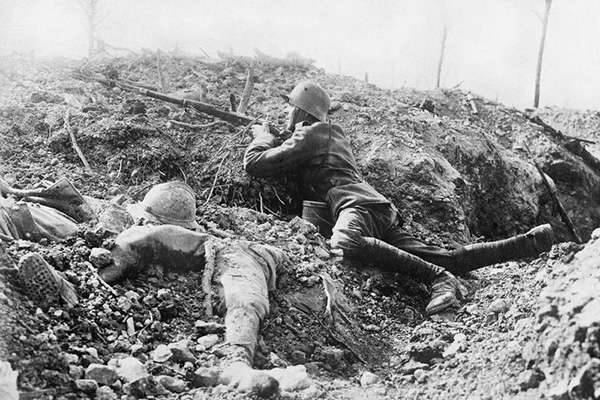
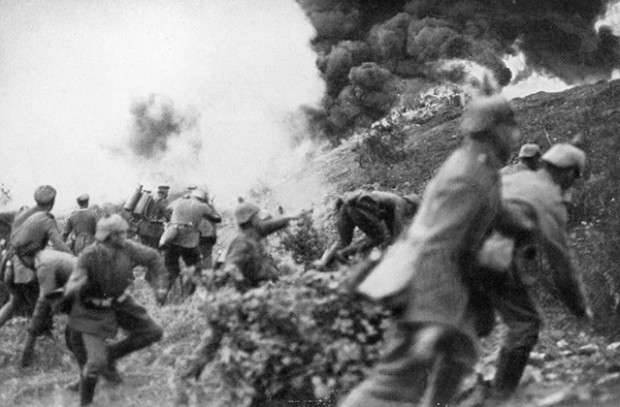
German infantry attack
Results
Thus, the Verdun operation, one of the largest and longest-running operations of the war, ended with a strategic defeat of the German army. Under Verdun, the German strategic plan for the 1916 campaign was wrecked — to take France out of the war in one strong and brief blow. The battle of Verdun took time, including preparation, for a whole year. Losing time, the German high command provided the Entente with the opportunity to train far superior human and material resources. The Entente, despite the Verdun losses, retained the strength to conduct a large strategic operation on the Somme and in further operations.
The battle of Verdun, as well as the subsequent battle of the Somme, marked the beginning of the depletion of the military potential of the German Empire and the strengthening of the Entente. The strategic initiative in the war passed to the Entente. The morale of the German army was weakened, the process of decomposition began, which led to open speeches at navy, changes in the high command and government. The German Empire was rapidly moving toward its collapse.
Military researchers distinguish the following mistakes of the German command: 1) a strategic strike was inflicted by insufficient forces, as a result of an accelerated breakthrough did not work, the struggle went to the point of exhaustion, exhaustion, depletion of reserves, turned into a slaughterhouse;
2) The German command, despite the fact that Verdun devoured "number and time", did not stop the operation, although time and energy could be better used;
3) the advance was too narrow. The scope of the Verdun operation was as follows: the width of the front is 15 km at the beginning of the operation and 30 km at the end, the depth of the operation is up to 10 km. The average rate of attack, except for the first days of the operation, was measured in steps! The struggle turned into an isolated breakthrough, into exhausting, bloody battles on a small piece of space. After the first days of February (21-25 in February), there was a push through, gnawing at the French defense, when the German troops advanced only a few dozen steps and suffered huge losses. The French command was able to tighten the reserves and organize resistance.
4) the offensive on the eastern bank of the Meuse was carried out at the same time as the offensive on the western bank;
5) there were no chilling blows on other sectors of the front;
6) The German command overestimated the capabilities of its artillery and underestimated the capabilities of the French artillery, which had the advantage of striking infantry and artillery with flanking fire, which were concentrated in a very narrow space. The Germans underestimated the fighting spirit and stamina of the French soldiers;
7) Germans underestimated the Russian army. It was believed that after the 1915 campaign, Russia was broken and would not be able to organize major and strong blows at the Central Powers. Naroch and Brusilovsky's breakthrough did not allow the German Empire to concentrate all efforts on the French theater.
Losses of opponents reached almost a million people, among whom killed - up to 430 thousand people. Through the Verden meat grinder, they missed, or, as Falkenghain put it, “milling at the Maas district mill”, more than 100 divisions: the French had 65 from 95 and the Germans had 50 from 125. In the German army, entire divisions were killed: the total losses of the divisions (replenished) reached 70-100% and even 150% of their normal composition. So, 21-I Hessian Infantry Division lost 279 officers and 9523-based programs, 5-I Brandenburg Division-218 officers and 10099-soldiers, 6-I Brandenburg division - 321 officer and 9282-soldiers (9 officer and 9,5 soldiers (XNUMX officer and XNUMX soldiers) (XNUMX officer and XNUMX soldiers (XNUMX officer and XNUMX soldiers) Thousands of people). German divisions remained for weeks, and often for months, remained in the Verdun Hell, up to their almost complete annihilation. The French acted more intelligently. The longest time spent in battle on the French front lasted ten days. In most cases, the French divisions were replaced after four or five days before they were completely exhausted, and after rest and replenishment were reintroduced into battle.
Under Verdun, light machine guns, rifle grenade launchers, flamethrowers and chemical shells were widely used for the first time. Artillery densities increased significantly, once again the mighty fire power of heavy and superheavy guns appeared. Obstacle fire and counter-training were widely used; the interconnection of artillery and infantry has become more effective, the rudiments of the fire shaft appear. Verdun is associated with the massive use of chemical shells, mainly used to suppress artillery. The offensive infantry built deep battle formations (up to 1 division per 1 km) and created assault groups. Engineers were widely used. For the first time, group tactics were used on the French front, when small groups of soldiers armed with rifles and a light machine gun defended themselves in defense “nests” (for example, in craters) and could contain more numerous enemy forces. There was an energetic struggle for supremacy in the air (assault functions appeared aviation) For the first time, operational regrouping of troops was carried out using road transport.
In the Verdun operation a new form of defense was defined - the fortified area. Long-term fortifications, in combination with field fortifications, showed their vitality and made it possible to carry out a positional struggle. Verdunsky fortified justified itself. Fortress structures - forts played a role in the defense of Verdun, but at the same time the need to modernize them was revealed. Concrete structures (forts Duomon and Vaud) withstood the shelling of powerful German and super-powerful artillery, which did not have any concrete shells. As the military historian A. Strokov noted: “This served as the basis for the creation of the so-called“ dispersed fortification ”, when the long-term and field fortification formed a single form of defense, erased the existing line between them. The deep defense system created by the French was the prototype of the future fortified areas (SD) created in the frontier zone. ”
An important role in the successful defense of Verdun was played by the open rear, which continuously fed the fortified area with reserves, ammunition and other materials. No wonder the main communication of the French army was called the "sacred path." This allowed the French not only to hold Verdensky fortified, but also to launch a counterattack.
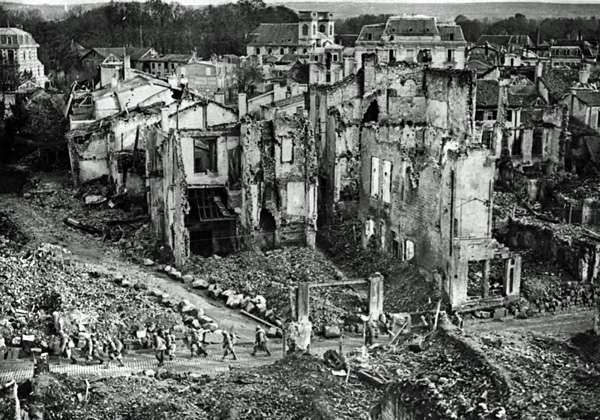
Ruins of Verdun
Sources:
Basil Liddell Garth. The truth about the First World War. M., 2009.
Zayonchkovsky AM World War I. SPb., 2002.
History World War I 1914-1918 / Edited by I. I. Rostunova M., 1975 // http://militera.lib.ru/h/ww1/index.html.
Peten A., F. Defense of Verdun. M., 1937 // http://militera.lib.ru/memo/french/petain_ap/index.html.
A. A. Strokov. Armed forces and military art in the First World War. M., 1974 // http://militera.lib.ru/science/strokov_aa/index.html.
E. Falkenhayn. High Command 1914-1916 in its most important decisions. M., 1923 // http://militera.lib.ru/h/falkenhayn_e01/index.html.
http://rusplt.ru/ww1/history.
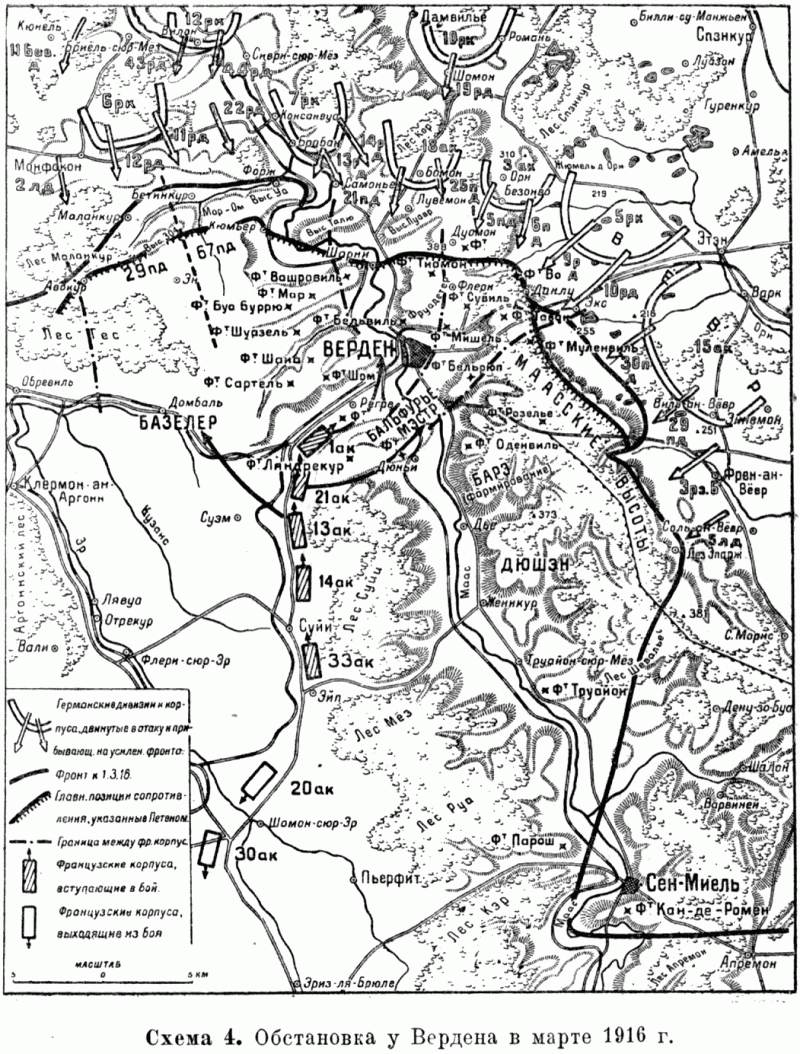
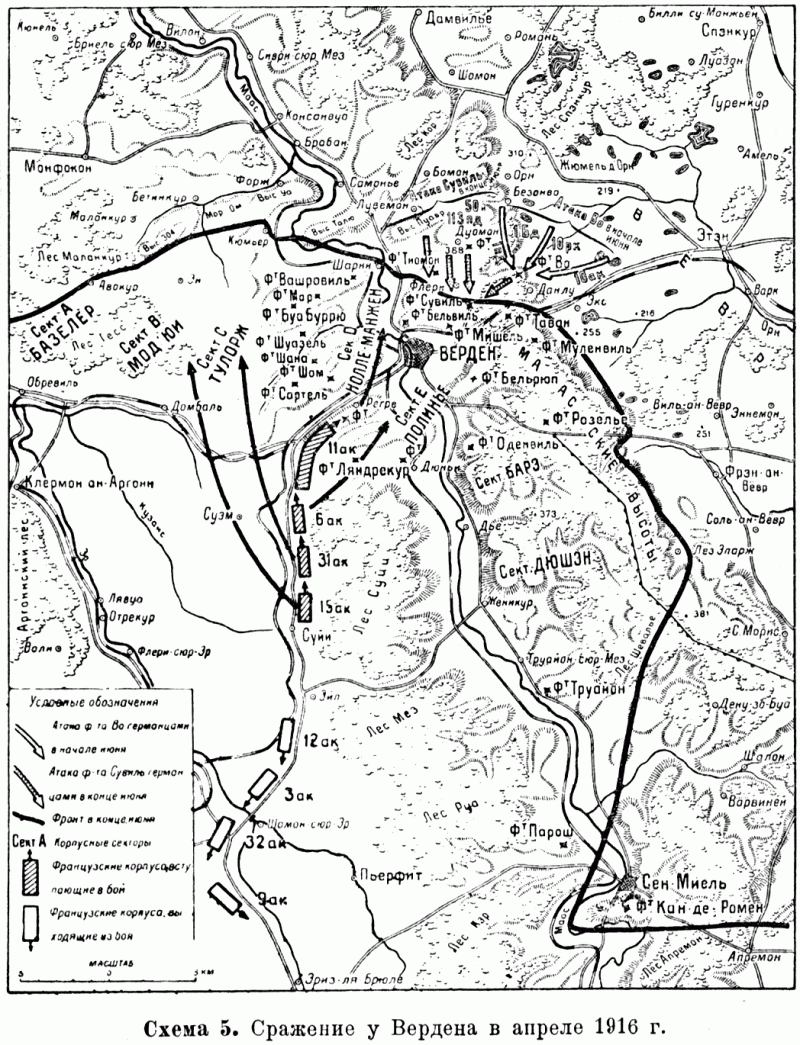
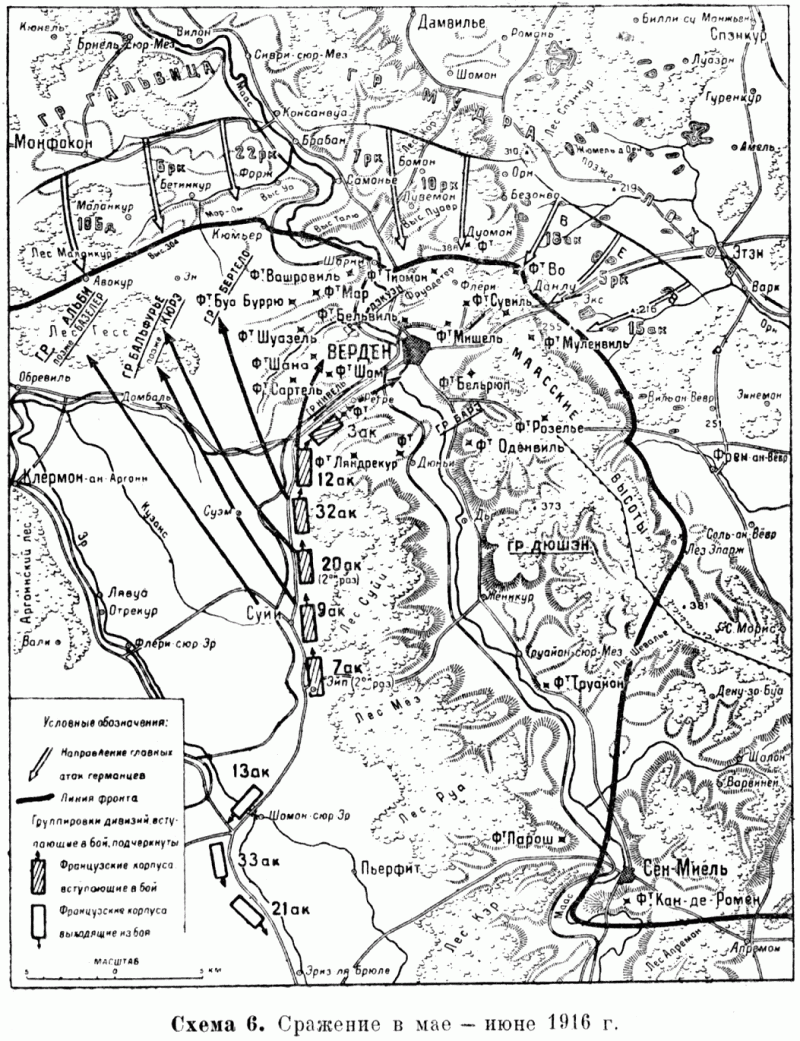
Information